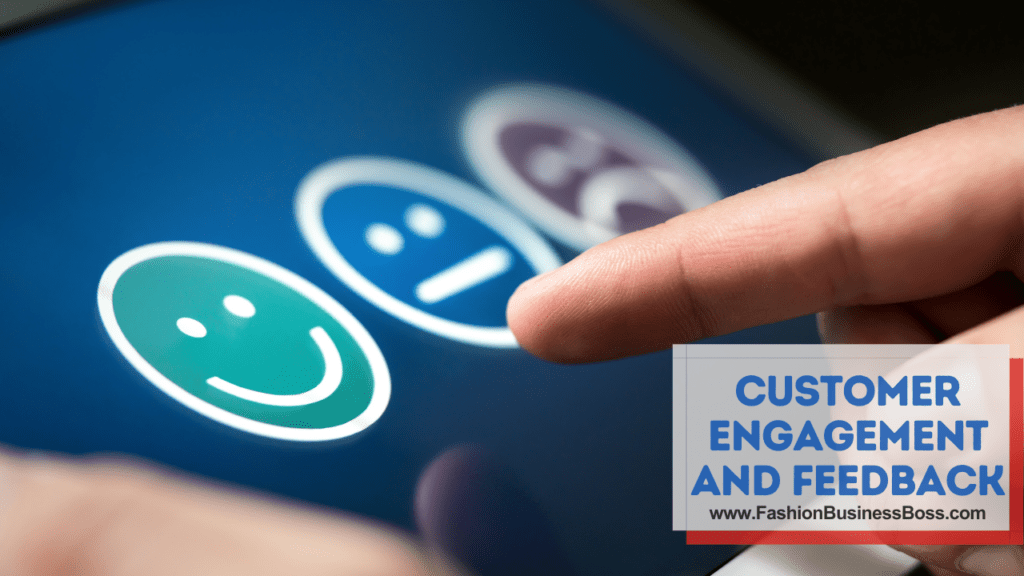Starting your own brand can be a thrilling and fulfilling journey. Whether you dream of designing timeless classics or pushing the boundaries of avant-garde fashion.
Here are some key steps to creating your own fashion brand: Define your style, conduct market research, craft a solid business plan, and design collections that reflect your unique vision.
In this article, we will walk you through the process of creating your own fashion brand from start to growth.
Define Your Brand Identity

Defining your brand identity is a fundamental step in the journey to creating a standout blog that gains prominence on Google’s search results. To start, consider your brand’s unique style and appearance. What sets it apart visually from others in your niche? Equally important, pinpoint your intended audience – the people you aim to connect with through your content. Understanding their demographics, preferences, and pain points will guide your content strategy effectively.
Also, think about the core values and key messages your brand wishes to convey. These are the bedrock principles and ideas that underpin your blog’s messaging. By investing time and effort in shaping your brand identity, you establish a robust foundation. This foundation will serve as a compass, ensuring that each blog post aligns harmoniously with your brand’s distinct style, resonates with your target audience, and effectively communicates your brand’s values and messages. Such coherence will undoubtedly contribute to the growth and visibility of your blog on Google’s search rankings.
Read more about: The Art of Branding: How to Make a Business Plan for Your Clothing Line?
Market Research and Trend Analysis
In the realm of fashion blogging and business, a crucial aspect to grasp is the current state of the fashion landscape. Keeping yourself informed about the most recent trends and engaging in thorough market research is paramount. This practice allows you to uncover openings and potential advantages that you can capitalize on.
By staying abreast of the latest developments and trends in the fashion world, you gain valuable insights that can shape your decisions in both design and business. This knowledge becomes the compass that guides your choices. Market research, on the other hand, aids in identifying gaps in the market and untapped opportunities that you can leverage for your blog and fashion-related ventures.
Ultimately, the fusion of staying updated with the latest trends and conducting diligent market research forms the bedrock of informed decision-making in the dynamic world of fashion. It equips you with the knowledge needed to make strategic choices in terms of design and business direction, ensuring that your fashion endeavors are in tune with the ever-evolving preferences and demands of your audience.
Create a Business Plan
Crafting a business plan is a fundamental step in establishing a thriving fashion brand. This comprehensive document serves as the foundational blueprint for your fashion venture, paving the way for informed decision-making and steady progress.
Within your business plan, it’s imperative to outline your brand’s vision and mission. This entails defining the overarching purpose and values that drive your fashion brand, serving as a guiding principle throughout your journey.
Financial projections are another vital component. These projections provide a clear picture of your expected income, expenses, and stability over a specific period. They enable you to anticipate financial challenges and opportunities.
Incorporate marketing and sales strategies into your plan, detailing how you intend to promote your brand and reach your target audience effectively. Your supply chain and production plan should outline the processes and resources required to create and distribute your fashion products.
Furthermore, don’t overlook legal and regulatory considerations. Ensure that your business complies with all relevant laws and regulations.
A well-structured business plan acts as your navigation tool, helping you steer your fashion brand in the right direction. It integrates your vision, finances, marketing, production, and legal aspects into a cohesive roadmap for your fashion business.
Design Your Collections

The creative phase of your fashion venture arrives now. Drawing upon your established brand identity and insights from market research, you embark on the design process for your collections. During this phase, it’s valuable to contemplate potential collaborations with skilled designers or the possibility of crafting your own unique creations.
As you delve into the design process, give significant consideration to elements such as fabrics, colors, and styles. These aspects should seamlessly align with the vision and identity of your fashion brand. Fabrics play a pivotal role in determining the texture and quality of your clothing, colors convey the mood and aesthetics, and styles define the overall look and feel of your collections.
By meticulously integrating your brand identity, market research findings, and careful design choices, you ensure that your collections not only resonate with your target audience but also embody the essence of your fashion brand. This harmonious blend of creativity and strategic alignment is instrumental in forging a distinct and appealing path in the fashion industry.
Read more about: The Art of Elegance: Launching Your High-End Clothing Brand
Sourcing Materials and Production
Sourcing materials and managing production represent pivotal stages in the journey of establishing your fashion brand. These steps are essential for delivering high-quality products to your customers while upholding ethical and sustainable practices in your supply chain.
Firstly, choosing the appropriate materials is a critical decision. The quality, texture, and durability of your products are directly influenced by the materials you select. Ensuring that these materials align with your brand’s values and objectives is of utmost importance.
Secondly, establishing partnerships with reliable manufacturers is a key aspect of production. Finding manufacturers who share your commitment to quality and ethical practices is essential. Collaborating with such partners ensures that your products are created in a responsible and sustainable manner.
Throughout the entire process, maintaining strict quality control measures is paramount. This involves monitoring and inspecting every aspect of production to guarantee that the final products meet your standards of excellence. By adhering to these principles, you can confidently provide your customers with products that not only align with your brand’s values but also meet their expectations for quality and ethics.
Branding and Logo Design
Building a distinctive brand identity, including a memorable logo, is a pivotal aspect of establishing your fashion brand. Your brand’s visual elements should strike a chord with your intended audience, leaving a lasting impression. Consistency is key; this means that your branding should maintain a uniform appearance across various touchpoints, encompassing clothing tags, your website, and social media profiles.
When it comes to logo design, simplicity often proves effective. A clean and straightforward design can be more memorable and versatile. Consider the colors, fonts, and imagery that best reflect your brand’s essence and connect with your target audience. These elements should harmonize to convey a clear and cohesive message about your brand.
Furthermore, it’s vital to extend this visual identity throughout every aspect of your brand’s presence, whether it’s through the labels on your clothing, the aesthetics of your digital spaces, or the imagery you share on social media. This uniformity enhances brand recognition and reinforces your brand’s personality and values in the eyes of your audience.
Launch Your Brand

The moment has arrived to introduce your fashion brand to the world. Whether through an in-person launch event or an online debut, it’s essential to craft a compelling introduction. Leveraging the power of social media, fashion influencers, and bloggers can help generate excitement and anticipation surrounding your brand.
Social media platforms like Instagram, Facebook, and Twitter provide effective channels to showcase your brand and engage with potential customers. Collaborating with fashion influencers and bloggers who align with your brand’s identity can extend your reach and credibility. Their endorsement can carry weight among their followers.
To further entice and reward early supporters, consider offering exclusive promotions or incentives. These incentives can encourage initial customers to become loyal advocates for your brand. This initial following can serve as a foundation upon which you can build a community of dedicated customers who believe in your brand’s vision and values.
Launching your fashion brand involves creating a memorable introduction, harnessing the influence of social media and fashion personalities, and providing incentives to early customers. These efforts collectively pave the way for a promising start and the potential for long-term brand loyalty.
Read more about: The Art of Sourcing: How to Find Clothes to Sell Online?
Build an Online Presence
In the current digital era, establishing a robust online presence is an absolute necessity for your fashion brand. This entails creating a captivating website and keeping your social media profiles active and engaging.
Your website serves as the digital hub for your brand, and it should be user-friendly and visually appealing. It’s where potential customers can explore your collections, learn about your brand, and make purchases. Consistency in updating your website with fresh content and product offerings is key.
Maintaining active social media profiles across platforms like Facebook, Instagram, and Twitter allows you to connect directly with your audience. To engage effectively, share not only your fashion creations but also behind-the-scenes glimpses, fashion tips, and personal stories that resonate with your followers.
By doing so, you create a sense of community and authenticity around your brand, making it more relatable to your audience. This fosters a stronger connection, driving brand loyalty and trust. In today’s digital landscape, building and nurturing this online presence is a cornerstone for stability in the fashion industry.
Marketing and Promotion
Efficiently marketing and promoting your fashion brand is crucial for expanding its visibility and reach. Consider allocating resources to various strategies, such as search engine optimization (SEO), email marketing, and pay-per-click advertising, all of which can help enhance your brand’s online presence.
SEO, or search engine optimization, involves optimizing your website’s content to appear higher in search engine results. This boosts your brand’s visibility when potential customers search for relevant keywords or phrases. It’s a long-term strategy that can pay off significantly over time.
Email marketing is another valuable tool. By regularly sending engaging emails to your subscriber list, you can keep your audience informed about new collections, promotions, and brand updates. It’s an effective way to maintain a direct line of communication with your customers.
Collaborating with influencers and fashion bloggers can provide a substantial boost. Their endorsement and reach can introduce your brand to a wider audience, building credibility and trust among their followers.
By combining these marketing strategies, you can steadily increase your brand’s visibility and engagement, ultimately fostering growth in your fashion business.
Customer Engagement and Feedback

Fostering enduring connections with your customers is a vital aspect of nurturing your fashion brand. Cultivating these relationships involves a few key principles.
Firstly, encourage feedback from your customers. This means actively seeking their opinions and suggestions regarding your products and services. Their insights can be invaluable in identifying areas for improvement and refinement.
Equally important is the implementation of these suggestions. Show your customers that their feedback matters by making meaningful changes in response to their input. This demonstrates your commitment to meeting their needs and expectations.
Furthermore, providing exceptional customer service is paramount. It entails being attentive, responsive, and considerate in all interactions with your customers. Address their inquiries and concerns promptly and courteously.
By adhering to these principles of customer engagement and feedback, you can set your brand apart. The relationships you build and the trust you earn from your customers will contribute to the sustained growth and reputation of your fashion brand.
Read more about: The Cost of Couture: Starting Your Clothing Brand Journey
Scale and Expand
As your fashion brand gains recognition and a solid footing, it’s worth exploring opportunities to broaden your horizons. This process involves both expanding your product range and venturing into new markets.
To begin, consider diversifying your product offerings. Assess whether there are complementary items or variations of your existing products that can cater to your existing customer base or attract new ones. Expanding your range can enhance customer loyalty and increase sales.
Exploring new markets is another avenue for growth. Research regions or demographics where your brand may have potential appeal. This expansion could involve selling your products in different locations or reaching out to a distinct customer base.
Throughout this journey, it’s vital to maintain an innovative and adaptable mindset. The fashion industry is dynamic, with trends that come and go. Staying updated and responsive to evolving fashion trends is essential for continued relevance and appeal.
Scaling and expanding your fashion brand involves diversifying your product offerings and exploring new markets. Remaining innovative and flexible is the key to sustaining growth and adaptability in the ever-changing world of fashion.
Conclusion
Creating your own fashion brand is a journey filled with creativity, challenges, and opportunities. By following these steps and staying committed to your vision, you can turn your passion for fashion into an enduring brand.
Frequently Asked Questions

Q: What are the initial steps in creating a fashion brand?
A: The initial steps involve defining the brand’s identity, conducting market research, creating a business plan, designing collections, and sourcing materials.
Q: How can a strong online presence for a fashion brand be established?
A: A strong online presence can be established by building an engaging website, maintaining active social media profiles, and implementing digital marketing strategies such as SEO and influencer collaborations.
Q: What factors should be considered when sourcing materials and production for a fashion brand?
A: When sourcing materials and production, it’s important to consider ethical and sustainable practices in the supply chain, prioritize quality control, and establish reliable manufacturing partnerships.
Q: How can a fashion brand be effectively marketed and promoted?
A: Effective marketing and promotion involve investments in SEO, email marketing, and PPC advertising, collaboration with influencers, and engaging with customers for feedback and brand loyalty.
Q: How can a fashion brand stay aligned with its vision as it grows and expands?
A: To stay aligned with its vision, a fashion brand should continuously revisit its identity and values, adapt to evolving trends, and prioritize authenticity in messaging and product offerings.
To learn more about starting your own clothing business, check out my startup documents here.
Please note that the contents of this blog are for informational and entertainment purposes only and should not be construed as legal advice. Any action taken based on the information provided in this blog is solely at your own risk. Additionally, all images used in this blog are generated under the CC0 license of Creative Commons, which means they are free to use for any purpose without attribution.

Meet Shawn Chun: Entrepreneur and Fashion Business Fan.
I’m a happy individual who happens to be an entrepreneur. I have owned several types of businesses in my life from a coffee shop to an import and export business to an online review business plus a few more and now I create online resources for those interested in starting new ventures. It’s demanding work but I love it. I do it for those passionate about their business and their goals. That’s why when I meet a designer or boutique owner at a craft fair, farmers market, retail location or anywhere else I see myself. I know how hard the struggle is to retain clients, find good employees and keep the business growing all while trying to stay competitive.
That’s why I created Fashion Business Boss: I want to help fashion business owners like you build a thriving business that brings you endless joy and supports your ideal lifestyle.

